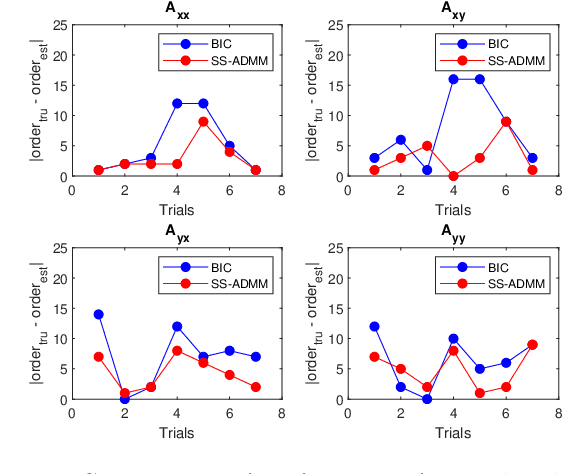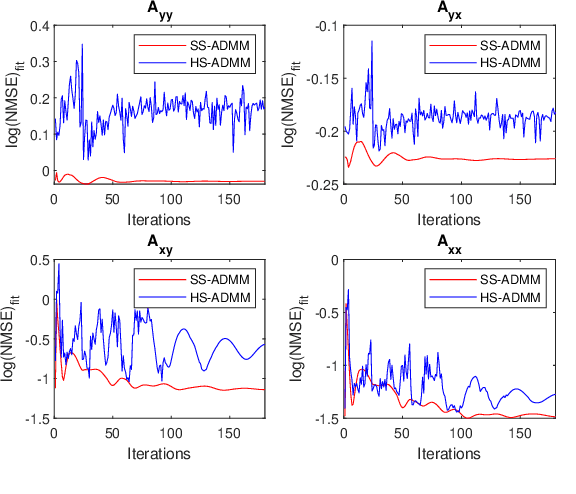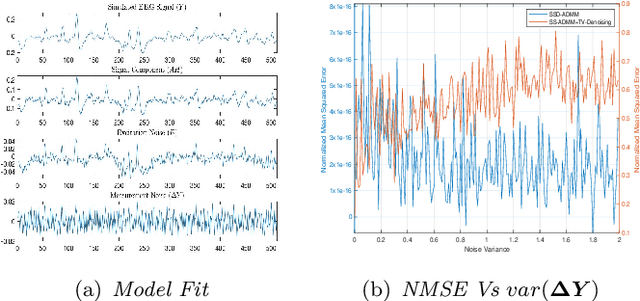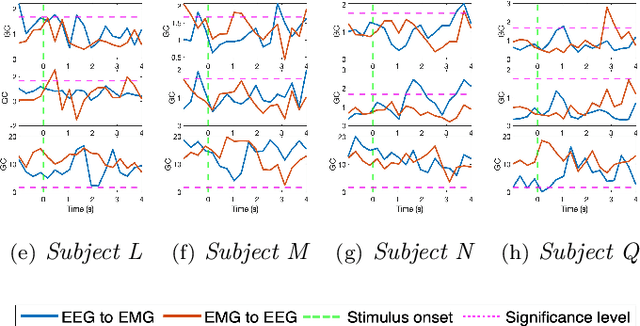Stationary and Sparse Denoising Approach for Corticomuscular Causality Estimation
Paper and Code
Jun 24, 2024



Objective: Cortico-muscular communication patterns are instrumental in understanding movement control. Estimating significant causal relationships between motor cortex electroencephalogram (EEG) and surface electromyogram (sEMG) from concurrently active muscles presents a formidable challenge since the relevant processes underlying muscle control are typically weak in comparison to measurement noise and background activities. Methodology: In this paper, a novel framework is proposed to simultaneously estimate the order of the autoregressive model of cortico-muscular interactions along with the parameters while enforcing stationarity condition in a convex program to ensure global optimality. The proposed method is further extended to a non-convex program to account for the presence of measurement noise in the recorded signals by introducing a wavelet sparsity assumption on the excitation noise in the model. Results: The proposed methodology is validated using both simulated data and neurophysiological signals. In case of simulated data, the performance of the proposed methods has been compared with the benchmark approaches in terms of order identification, computational efficiency, and goodness of fit in relation to various noise levels. In case of physiological signals our proposed methods are compared against the state-of-the-art approaches in terms of the ability to detect Granger causality. Significance: The proposed methods are shown to be effective in handling stationarity and measurement noise assumptions, revealing significant causal interactions from brain to muscles and vice versa.
 Add to Chrome
Add to Chrome Add to Firefox
Add to Firefox Add to Edge
Add to Edge